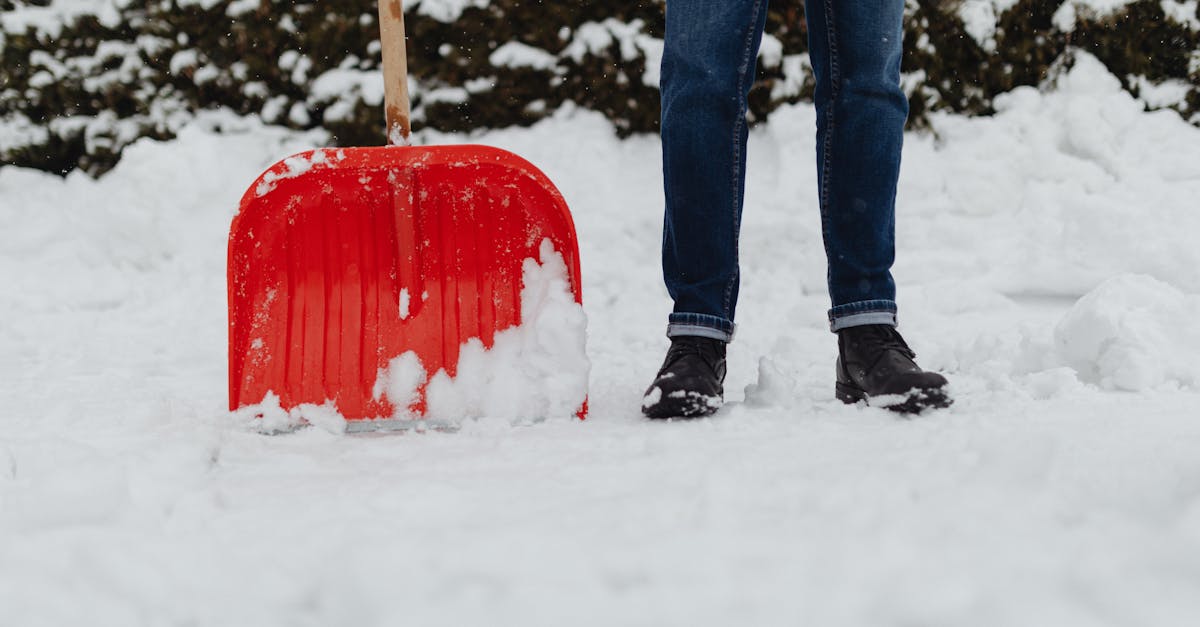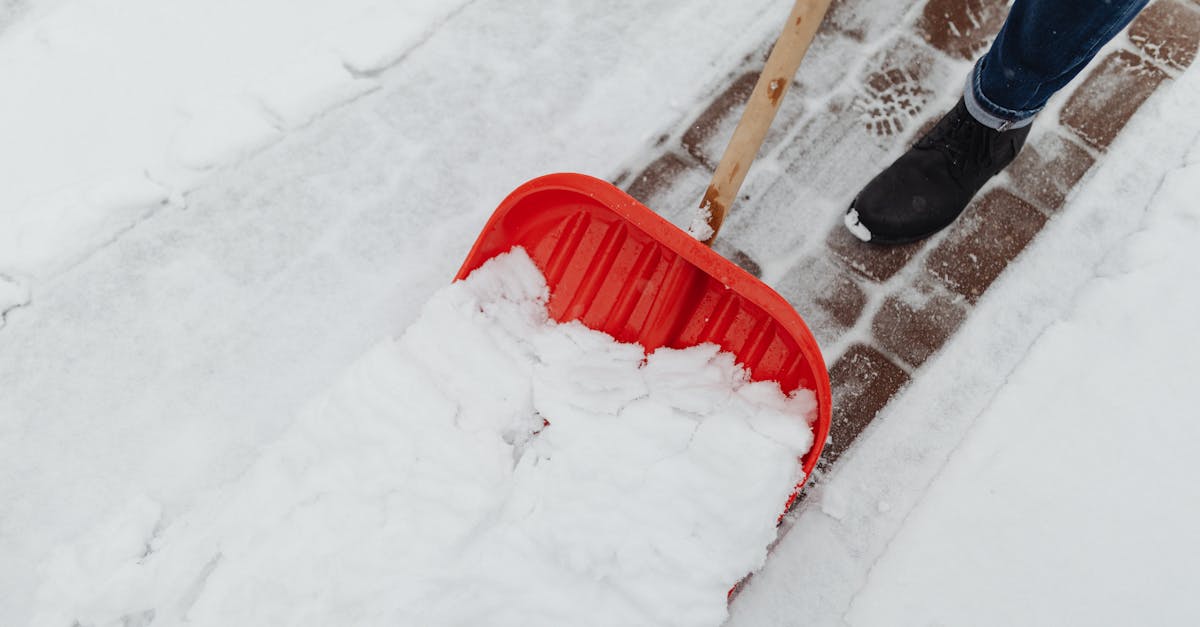
Table Of Contents
Time Management in Snow Plowing
Effective time management is crucial in snow plowing to ensure that roads are cleared promptly and safely. Weather conditions can change rapidly, requiring operators to be prepared for different snow accumulations and varying levels of precipitation. Prioritizing routes based on traffic patterns and the level of importance helps maximize efficiency. Some areas might require more immediate attention, such as those near hospitals or emergency services, while less crucial streets can be addressed later.
Planning shifts and coordinating with other snow plowing teams can also enhance productivity. Assigning specific crews to designated areas minimizes downtime and allows for a more organized approach to snow removal. Clear communication among team members is essential, as it ensures everyone is aware of their responsibilities and any changes in weather conditions that may affect their schedules. By focusing on these strategies, snow plowing operations can adapt more readily to the demands of winter weather.
Efficient Route Planning Strategies
Efficient route planning is essential for effective snow plowing. Mapping out the most direct and practical paths not only minimizes time spent on the road but also maximizes productivity during heavy snowfall. Identifying priority areas, such as main roads and emergency routes, allows plow operators to tackle the most critical zones first. Utilizing technology, such as GPS and real-time traffic data, can enhance decision-making and ensure that crews are allocated where they are needed most.
Additionally, considering the nuances of different neighborhoods can optimize snow plowing efforts. Urban areas may present unique challenges due to parked cars and narrower streets, while rural regions might require longer travel distances between routes. Adjusting plans based on these factors helps maintain efficiency, allowing snow removal teams to work swiftly and effectively regardless of the environment. By carefully planning routes, operators can reduce downtime and improve overall effectiveness during snow events.
Factors Affecting the Difficulty of Snow Plowing
Several factors can greatly influence the difficulty of snow plowing. Weather conditions play a crucial role; heavy snowfall and wind can create challenging drifts that make it harder to clear roads efficiently. Additionally, the temperature affects snow quality, with wet, heavy snow being more cumbersome to move than light, powdery flakes. Plow operators must also contend with fluctuating weather forecasts that can change quickly, making it essential to stay adaptable and prepared for shifting conditions.
The type of area being plowed also contributes to varying levels of difficulty in snow plowing. Urban settings often present obstacles like parked cars, walkways, and tight spaces that require skillful maneuvering. In contrast, rural roads may be less congested but can feature rugged terrain and limited access to resources, complicating maintenance efforts. Understanding these dynamics helps operators anticipate challenges and implement strategies to navigate through different environments effectively.
Terrain and Urban vs. Rural Considerations
The terrain plays a significant role in the complexity of snow plowing. Urban areas often have narrower streets and a higher density of parked vehicles, making maneuvering for snow plows more challenging. In these environments, operators must navigate tight turns and avoid obstacles while ensuring roads remain clear for the community. The added pressure of maintaining access for emergency services adds another layer of difficulty to urban snow plowing.
Conversely, rural areas may present different challenges for snow plowing. While the roads are generally wider and less crowded, they might suffer from limited visibility and less frequent maintenance. The open terrain can lead to accumulation of snow drifts that require thorough clearing. Additionally, distant locations can complicate logistics for crews, as they may need to travel longer distances between service sites, impacting overall efficiency during snow plowing operations.
Equipment Maintenance and Its Impact
Regular equipment maintenance plays a crucial role in the effectiveness of snow plowing operations. Properly maintained snow plows are less likely to experience breakdowns during heavy snowfall, which can delay service and increase safety risks. This includes checking vital components such as blades, hydraulic systems, and engines to ensure they function optimally. Timely maintenance prevents minor issues from escalating into significant problems that could hinder performance during critical weather events.
Additionally, the impact of neglecting maintenance can lead to increased fuel consumption and inefficiency. When snow plows are not in optimal condition, their ability to clear roads quickly diminishes, resulting in longer plowing times. This not only affects the smooth flow of traffic but also raises operational costs. Ensuring that equipment is well-kept can enhance the overall efficiency of snow plowing efforts, providing communities with timely access during winter storms.
Keeping Snow Plows in Optimal Condition
Regular maintenance of snow plows is essential for ensuring peak performance during snow plowing operations. The machinery must undergo thorough checks before the winter season to address any potential issues. Components such as blades, hydraulic systems, and lights should be inspected for wear and functionality. Addressing these areas not only helps in avoiding breakdowns but also extends the lifespan of the equipment.
Keeping snow plows in optimal condition also involves routine cleaning to prevent rust and corrosion caused by road salt and moisture. This process ensures that the plows remain effective and ready for immediate use when winter storms arrive. Operators should be trained in basic maintenance procedures to spot problems early. Consistent care allows for smoother operations and enhances the safety of snow plowing efforts on various terrains.
FAQS
What are some common challenges faced in snow plowing?
Common challenges in snow plowing include poor visibility, icy conditions, traffic, and managing time effectively to clear routes before they become hazardous.
How can route planning improve snow plowing efficiency?
Efficient route planning can help minimize travel time, reduce fuel consumption, and ensure that all areas are cleared systematically, making the process faster and more effective.
What factors can affect the difficulty of snow plowing?
Factors affecting snow plowing difficulty include terrain type (hilly vs. flat), weather conditions, urban versus rural settings, and the amount of snowfall received.
How important is equipment maintenance for snow plowing?
Equipment maintenance is crucial for snow plowing as it ensures that the snow plows operate effectively, reduces the risk of breakdowns, and enhances safety during operations.
Are there specific techniques for plowing in urban areas compared to rural areas?
Yes, urban snow plowing often requires more careful navigation around parked cars, pedestrians, and tight spaces. In contrast, rural plowing may focus more on covering larger, open areas with less traffic.

